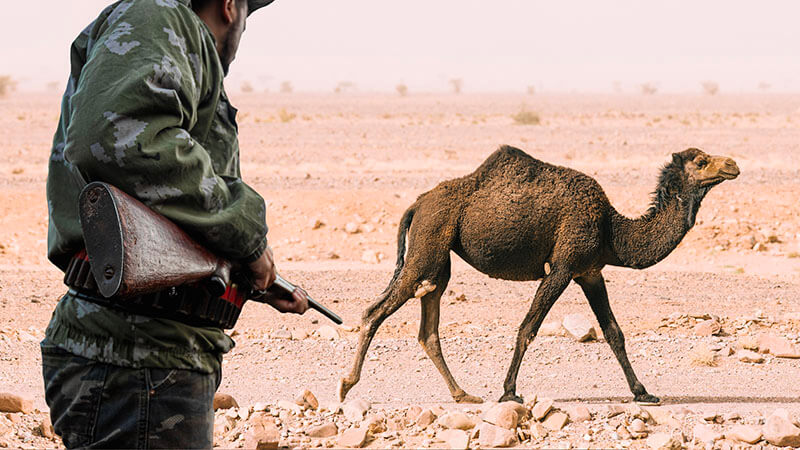AE 642.2 – Aussie Fact: Pemulwuy
Learn Australian English in this Aussie Fact episode of the Aussie English Podcast where I teach you about the history of Pemulwuy.
AE 642.2 - Aussie Fact: Pemulwuy transcript powered by Sonix—the best automated transcription service in 2020. Easily convert your audio to text with Sonix.
AE 642.2 - Aussie Fact: Pemulwuy was automatically transcribed by Sonix with the latest audio-to-text algorithms. This transcript may contain errors. Sonix is the best way to convert your audio to text. Our automated transcription algorithms works with many of the popular audio file formats.
Pemulwuy, Australia's first guerilla warrior. Somewhere near Botany Bay in New South Wales, a good 40 to 50 years before either James Cook or the members of the First Fleet would arrive in Australia, an Aboriginal baby was born. From the moment he opened his eyes, his family would have noticed that he had a turned eyeball or blemish in his left eye. Usually, tradition would force indigenous parents to return any babies with deformities back to the earth to be reborn in the future. However, for reasons that remain forever lost to history, that baby was allowed to live and will grow up to become Pemulwuy, Australia's first guerilla warrior, who would face his lands invaders head on.
Pemulwuy is estimated to have been born around the year of 1750 in their area of Botany Bay on the northern side of the Georges River, in New South Wales. Although born with an evident deformity in his left eye, he managed to live in spite of traditional beliefs that such babies should be killed. Indigenous scholar and historian Eric Willmot wrote:
'Normally a child that showed an obvious deformity would have been, well, people would have expected that that child be sent back to be reborn again. It was generally thought that humans, like everything, came from the land and that a woman, the actual act of conception was a woman being infected by a child's spirit from the land'.
Besides the obvious fact that not being killed as a baby is a good thing, his strange gaze allowed him to be more easily identified by colonists who wrote about him, usually, after he'd attacked them and disappeared into the night. The result of living with such a deformity may have also carried far more weight for Pemulwuy in the Aboriginal community. In adulthood, he was given the name 'Bembul Wuyan', also spelt as Pemulwuy, Pemulwoy, among other variations, and Europeans at the time rendered his name as “Bimblewove” or “Bumbleway”.
The name Pemulwuy is derived from the language of Darug, where “pemul” means “earth” and “wuyan” means “crow”. According to an Aboriginal man named Colebe, who worked as a mediator for Governor Phillip and local tribes, Pemulwuy’s left food had been clubbed, that is, deformed by being beaten with a wooden club, which suggested he was a 'carradhy' or 'clever man', the equivalent of a shaman. Though his clubbed foot may have also meant he had a position analogous to a 'Kurdaitcha' from Central Australian tribes. Kurdaitcha man are ritual executioners and lawmen who are also marked with a mutilated foot.
Pemulwuy early life is clouded in mystery, and he was only written about after the European colonisation of Australia in 1788, with the arrival of the First Fleet smack bang on Pemulwuy's doorstep of Botany Bay.
On December the 9th of 1790, a shooting party left the colony at Botany Bay.It included a sergeant of Marines, Watkin Tench, and three convicts including Governor Phillip’s gamekeeper, John McIntyre. After a day's travel and hunting, the party set up camp and went to sleep. Officer Watkin Tench wrote down Pemulwuy first literary appearance as he describes what happened that night just after midnight.
About 1 o'clock. The sergeant was awakened by a rustling noise in the bushes near him, and supposing it to proceed from a kangaroo called to his comrades who instantly jumped up. On looking about more narrowly, they saw two natives with spears in their hands creeping towards them, and three others a little farther behind. As this naturally create alarm, McIntyre said, 'don't be afraid. I know them', and immediately laying down his gun stepped forward and spoke to them in their own language. The Indians, finding they were discovered, kept slowly retreating, and McIntyre accompanied them about a hundred yards, talking familiarly all the while, one of them now jumped on a fallen tree, and, without giving the least warning of his intention, launched his spear at McIntyre and lodged it in his left side. The person who committed this wanton act was described as a young man with a speck or blemish in his left eye. That he had been lately among us was evident from his being newly shaved".
The group of Aborigines were pursued by the settlers armed with muskets, but they quickly vanished into the darkness. McIntyre was still alive, though mortally wounded, and was taken back to the settlement. McIntyre was known for having wounded and killed numerous Aborigines in the past while fighting them over food. He also frequently shot and ate totem animals revered by the local people as spirit ancestors, whilst he trespassed on their tribal land something that Governor Phillip had forbidden at the time. It's believed the Pemulwuy's act had been committed out of revenge against cIntyre for his past actions. Officer Tench suspected that the Aborigines had attacked MacIntyre for a reason.
He noted that the Aboriginal people feared and hated the man, including a man named Bennelong.
Side note: Bennelong is famous in Australian history as an Aboriginal man who Governor Phillip kidnapped and held captive in the hopes of teaching English in order to interact and communicate with the local Aborigines.
A few weeks later, in early January, McIntyre succumbed to his wounds, including a perforated lung and several broken bones. The spear that Pemulwuy had thrown at McIntyre was barbed with small pieces of silcrete flakes, red stone chips, which were a signature mark that indicates the Pemulwuy belonged to one of the local tribes.
Governor Phillip was pissed. Despite McIntyre's reputation amongst the Aborigines, he was convinced that the action was unprovoked as McIntyre had been unarmed at the time of his spearing. As a result, he ordered Officer Tench to round up his company of about 50 Marines and lead a punitive expedition in retaliation for Pemulwuy's attack.
Governor Phillip ordered that two of Pemulwuy's people belonging to the Bidjigal tribe were to be captured and 10 were to be killed. These 10 were then to be beheaded and their heads returned to the settlement. Tench swiftly suggested an alternative and less bloodthirsty plan, that instead may be only six Bidjigal were to be captured and brought to Sydney Cove, but none were to be killed out-of-hand.
Tench's proposal was accepted and the expedition set out on the 14th of December in search of Pemulwuy and the Bidjigal tribe. The expedition was the largest military operation since the founding of the colony, comprising Tench, lieutenants William Dawes and John Poulden, and 46 other Marines. However, despite three days of searching, the operation was a complete and utter failure when not a single Bidjigal man, woman or child was seen. This likely reflected the ineptitude of the colonists at navigating through the Australian bush.
Finally, on the 17th of December, Tench ordered the party to return empty-handed with their tail between their legs, back to Sydney Cove in order to resupply.
From 1792, Pemulwuy led a series of raids on the settlers of various farms and crop fields at locations including Prospect, Toongabbie, Georges River, Parramatta, Brookfield Hill and the Hawkesbury River. The attacks were in an attempt to weaken the newly established colony, who were almost entirely dependent on crops of maize and wheat, as well as their limited and precious livestock.
Their main method of assault was primarily guerrilla warfare, which they achieved through hit and run tactics. Slowly but surely, the settlers' supplies and stores diminished at the hands of the Bidjigal warriors.
Side note: controversially, some historians claim that this was not Pemulwuy's way of resisting the settlers. On the contrary, they believe he wanted to maintain a good relationship with the colony's governor, but instead that it was an indigenous method of dispensing justice for those breaching Bidjigal law.
In December of 1794, a man named David Collins reported an attack by Aborigines who he stated were, "Of the Hunters' or Woodman's tribe, people who seldom came among us and who consequently were little known".
Collins suggested that the majority of the attacks were due to the settlers' own misconduct, which included the kidnapping of Aboriginal children. He also reported that Pemulway and a bunch of other strangers came into an initiation ceremony held at Farm Cove on the 25th of January in 1795. Collins wrote the Pemulwuy was 'a most active enemy to the settlers, plundering them of their property and endangering their personal safety'. All throughout this period, Pemulwuy had also been allying himself with several other surrounding tribes, including the Eora, the Dharug, and Tharawal people, with the intention of creating a collaborative force to resist the invaders. He even accepted escaped convicts into his force, including the convicts William Knight and Thomas Thrush. It soon became known as the “Native Resistance”.
In December 1795, Pemulwuy and a band of warriors attacked a work party at Botany Bay, including the first Australian bushranger, an African ex-convict by the name of John Caesar, commonly nicknamed Black Caesar. Caesar was one of the first 12 prisoners of African origin who arrived in Australia on the First Fleet. Caesar fought with Pemulwuy and managed to crack Pemulwuy's skull during the fight, leading the colony to believe that he'd been killed. Though seriously injured, Pemulwuy managed to escape and survive to live and fight another day. Again, military forces were assembled and sent in pursuit of Pemulwuy and his people to deal with "these dangerous predators".
Captain Patterson sent soldiers from Parramatta with the instructions to kill, 'as many as they could meet", of the Bidjigal tribe. Two years later, in March of 1797, Pemulwuy led a frontal attack on the government farm at Toongabbie. This group of attackers comprised several indigenous tribes in the area who had all been brought together under the leadership of Pemulwuy. After the attack, settlers tracked him to the outskirts of Parramatta, where they found him heavily injured. In the raid, he'd been shot at, and as a result, several pieces of buckshot were now embedded in his head and body. Extremely wounded, Pemulwuy was apprehended and taken to a prison hospital nearby. There he stayed for several days in a state of unconsciousness, where one evening he awoke to find himself chained to the bed by leg irons.
Somehow he managed to escape, which led to the belief that Pemulwuy could not be killed by white people's bullets and weapons, and that he could transform into a crow at will, which had allowed him to escape capture that night while still in chains.
A month later, in April, Governor Phillip met several parties of natives near Botany Bay, and Pemulwuy was among them and saw that he had perfectly recovered from his wounds. He saw and spoke with one of the gentlemen of the party, asking him if the governor was angry and seemed pleased at being told that he was not. In Colin's words: "through this fancied security, he was said to be at the head of every party that attacked the maize grounds".
On the 1st of May in 1801, the new governor, Lieutenant Philip King, issued a government and general order that Aborigines near Parramatta, Georges River and Prospect could be shot on sight in November. That same year, a proclamation outlawed Pemulwuy and offered a reward to anyone who killed or captured him. The reward offered was 20 gallons of spirits or a free pardon for anyone who captured the warrior, whether dead or alive. Such a reward was definitely a high incentive for convicts as well as freedmen to attempt to shoot and catch Pemulwuy on site.
And the reward did the trick. By the second of June in 1802, Pemulwuy had been shot dead. Exactly who fired the fatal shot still remains a mystery. About a week later, a dispatch sent by Lord Hobart to Governor King arrived, stating that he lamented the settlers' treatment of the Aboriginal population, saying 'be clearly understood that on future occasions, any instance of injustice, of wanton cruelty towards the natives will be punished with the utmost severity of the law'.
Based on the work of Keith Vincent Smith, the killer has generally been assumed to have been Henry Hacking, the first mate and game master of the Lady Nelson. However, recent research has questioned this assertion, suggesting that settlers from Parramatta, Toongabbie and Prospect Hill areas were instead much more likely to have been the killers.
Unfortunately, it's unlikely we'll ever know Pemulwuy's true killer. Kohlhoff asks whether ultimately it matters in the end, though, from one perspective it would matter a great deal to Pemulwuy's people, on another:
"Knowing who fired the fatal shot does not affect Pemulwuy's place in history. Pemulwuy was, as Governor King recognised, a brave and independent character. He inspired others, fought hard and died for his land and his people. And for that we can all admire him'.
Up until his death, Pemulwuy's reputation for being invincible created an unrivalled aura around him that bullets couldn't harm him and that chains could no longer keep him tied down. Both Indigenous Australians and settlers alike actually started to believe these rumours. John Washington Price wrote that "he has now lodged in him in shot, slugs and bullets, about eight or 10 ounces of lead."
Following his death, Pemulwuy his head was cut off and preserved in alcohol and sent to Sir Joseph Banks for research and display in England.
Side note: you guys might know the name Sir Joseph Banks as he was the naturalist who accompanied James Cook on the Endeavour to Australia in 1770.
At the time, indigenous skulls were very highly prized for research in England, where scientists took samples and attempted to test them. It was accompanied by a letter by the governor at the time, Lt. Phillip King, stating that: "although a terrible pest to the colony, he was a brave and independent character."
To this day, the location of Pemulwuy's skull is still unknown. Whilst the Australian Government and Prince William from Britain have pledged to help the Bidjigal elders recover Pemulwuy's remains, they are still yet to be found.
Although, historians often argue over the nature and extent of Aboriginal resistance to European settlement of Australia, if a single person can be identified to have clearly carried out armed warfare against the settlers of early Sydney, it was Pemulwuy. To this day, he's a heroic figure to all Australians.
Quickly and accurately convert audio to text with Sonix.
Sonix uses cutting-edge artificial intelligence to convert your mp3 files to text.
Thousands of researchers and podcasters use Sonix to automatically transcribe their audio files (*.mp3). Easily convert your mp3 file to text or docx to make your media content more accessible to listeners.
Sonix is the best online audio transcription software in 2020—it's fast, easy, and affordable.
If you are looking for a great way to convert your mp3 to text, try Sonix today.
Here's what you get when you sign up!
- Read while you listen using the Premium Podcast player.
- Understand every word in every episode.
- Download all PDF transcripts and MP3s for 600+ episodes.
- Get access to bonus member-only episodes.












Responses